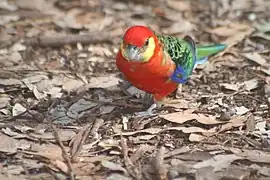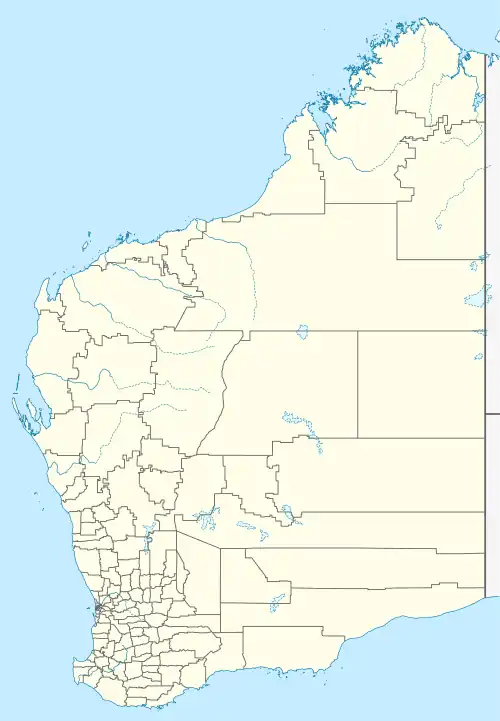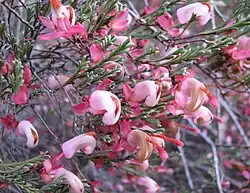Dragon Rocks Nature Reserve
Dragon Rocks is a 322 km2 nature reserve in the south-east of the wheatbelt region of Western Australia, some 310 km east-south-east of Perth. It is surrounded by farmland. It is listed on Australia's Register of the National Estate as an area significant for rare species of plants and animals.[3]
| Dragon Rocks Nature Reserve Western Australia | |
|---|---|
 The reserve is an important site for the western rosella | |
 Dragon Rocks Nature Reserve | |
| Nearest town or city | Hyden |
| Coordinates | 32°45′00″S 119°02′15″E |
| Established | 1979 |
| Area | 32,195 hectares (79,560 acres)[1][2] |
| Managing authorities | Department of Biodiversity, Conservation and Attractions |
| See also | List of protected areas of Western Australia |

Flora and fauna
The reserve contains 28 different vegetation associations, including heaths, woodlands, low forests, mallee and kwongan. The large number of plant communitiess form a complex mosaic characteristic of wheatbelt vegetation, including vegetation communities occurring on laterite. Sixteen 16 plants, including 13 eucalypts, are endemic either to the wheatbelt region or to Western Australia. The rare Lake Varley grevillea is found in the reserve.[3]
Frog species found in the reserve include Günther's toadlet and the spotted-thighed frog. Reptiles present include at least three legless lizards and three geckos. The honey possum, Gilbert's dunnart and the red-tailed phascogale are present.[3]
The reserve has been identified as an Important Bird Area because it supports populations of the endangered Carnaby's black-cockatoo, malleefowl, western rosella, blue-breasted fairy-wren, purple-gaped honeyeater and western yellow robin.[4]
References
Notes
- "Terrestrial CAPAD 2022 WA summary". www.dcceew.gov.au/. Department of Climate Change, Energy, the Environment and Water. Retrieved 8 September 2023.
- "Australian Protected Areas Dashboard". www.dcceew.gov.au/. Department of Climate Change, Energy, the Environment and Water. Retrieved 8 September 2023.
- Australian Heritage Database.
- Birdata.
Sources
- "IBA: Dragon Rocks". Birdata. Birds Australia. Archived from the original on 6 July 2011. Retrieved 18 June 2011.
- "Dragon Rocks Nature Reserve". Australian Heritage Database. Department of Sustainability, Environment, Water, Population and Communities. Retrieved 18 June 2011.